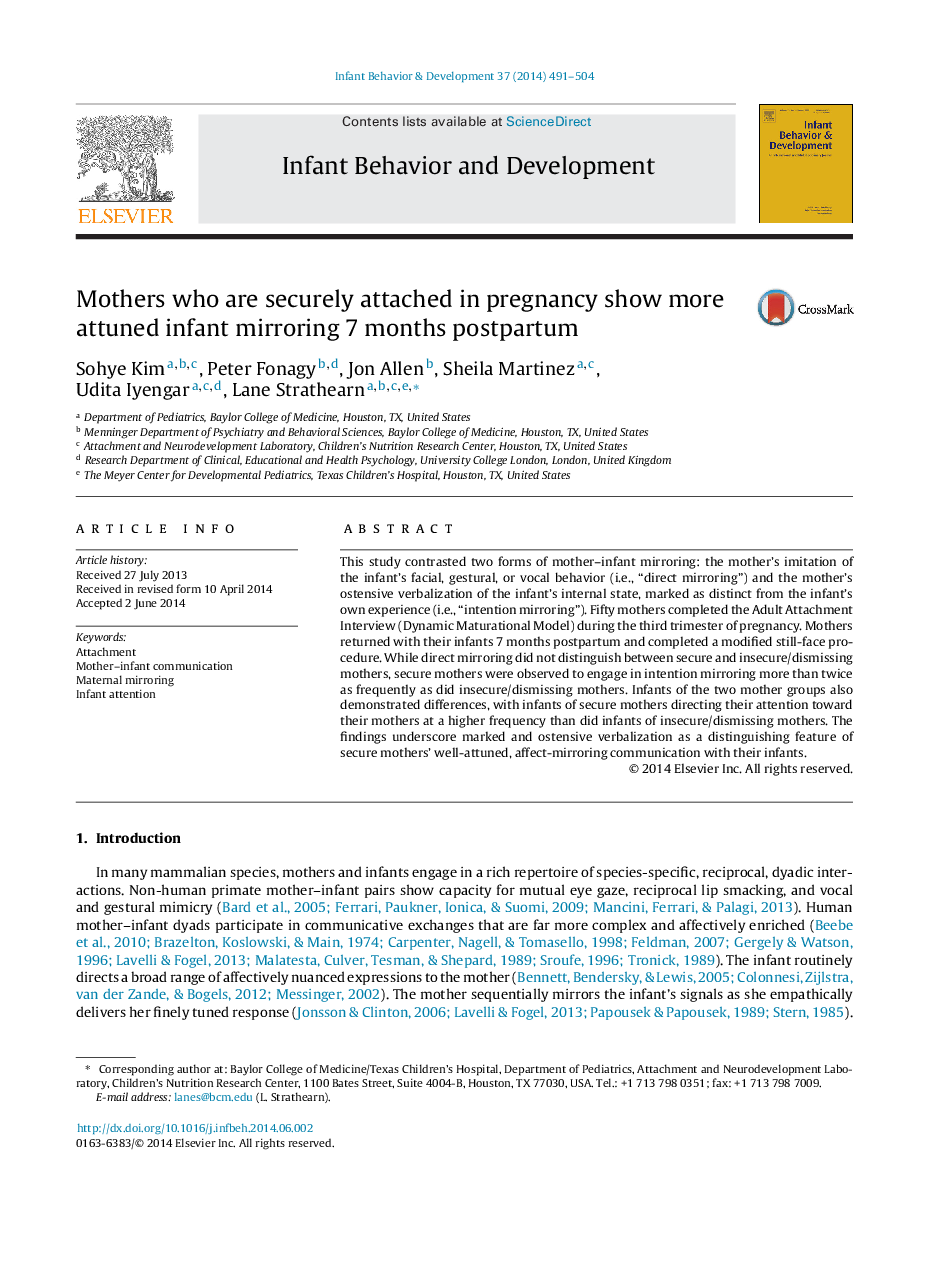| Article ID | Journal | Published Year | Pages | File Type |
|---|---|---|---|---|
| 10452617 | Infant Behavior and Development | 2014 | 14 Pages |
Abstract
This study contrasted two forms of mother-infant mirroring: the mother's imitation of the infant's facial, gestural, or vocal behavior (i.e., “direct mirroring”) and the mother's ostensive verbalization of the infant's internal state, marked as distinct from the infant's own experience (i.e., “intention mirroring”). Fifty mothers completed the Adult Attachment Interview (Dynamic Maturational Model) during the third trimester of pregnancy. Mothers returned with their infants 7 months postpartum and completed a modified still-face procedure. While direct mirroring did not distinguish between secure and insecure/dismissing mothers, secure mothers were observed to engage in intention mirroring more than twice as frequently as did insecure/dismissing mothers. Infants of the two mother groups also demonstrated differences, with infants of secure mothers directing their attention toward their mothers at a higher frequency than did infants of insecure/dismissing mothers. The findings underscore marked and ostensive verbalization as a distinguishing feature of secure mothers' well-attuned, affect-mirroring communication with their infants.
Keywords
Related Topics
Life Sciences
Neuroscience
Behavioral Neuroscience
Authors
Sohye Kim, Peter Fonagy, Jon Allen, Sheila Martinez, Udita Iyengar, Lane Strathearn,
